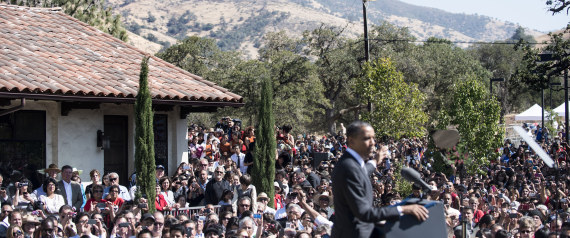By Nidhi Thakar & Mark Magaña
LatinaLista
What do our national parks mean to us? As we approach the National Park Service's centennial, this question becomes especially relevant. For American Latinos, having the National Park System be a storyteller of the past means Latinos see their stories and legacy represented in our national parks and monuments.
The César E. Chávez National Monument is a perfect example. Established to commemorate Chávez's efforts in the farm worker movement that culminated in the creation of the United Farm Workers of America, the César E. Chávez National Monument is one of the Obama Administration's most notable advances to recognize the contributions of American Latinos.
But more must be done to ensure that America's monuments and national parks reflect our nation's rich and diverse history.
Today, 54 million Hispanics and Latinos live in the United States, and Latinos are one of the fastest growing ethnic minorities in the country. By 2060, the number of Hispanics and Latinos in America will double, with Latinos making up almost one-third of our country's population. Despite the many cultural, political, and economic contributions of Latino Americans to our nation, less than one-percent of all national historic landmarks and only roughly 4 percent of all national park units are dedicated to the Latino community.
The Latino American community isn't the only group whose stories remain untold in our National Park System. Lesbian, Gay, Bisexual, and Transgender (LGBT) Americans, Asian Americans, African Americans, Native Americans, and women are all examples of groups that remain underrepresented in our national parks, illustrating a systemic problem. In fact, less than one-quarter of all existing national park units have a primary purpose of telling the story of an underrepresented community.
The National Park Service has made recent strides to change the way we view and connect with our national parks. Leading up to the National Park Service's centennial in 2016, the Service has launched a number of cultural heritage initiatives to tell the stories of all Americans. These heritage initiatives are aimed at exploring how we can recognize, interpret, and preserve the history of underrepresented groups in America for future generations. As part of this initiative, the National Park Service has launched the American Latino Heritage Project to share the legacy of this group.
But even with this progress, more can and should be done. A recent analysis by the Center for American Progress (CAP) found that, over the past 25 years, national parks and monuments have become more inclusive. But only 22 percent of congressional national park unit designations have valued inclusivity, compared to 33 percent of designations made by presidents.
It's time for Congress do its part to promote diversity in our national parks.
So what can Congress do? For starters, Congress must immediately reauthorize America's best parks program – the Land and Water Conservation Fund (LWCF) – set to expire at the end of September. Created 50 years ago, the LWCF reinvests a small portion of federal fees from offshore oil and gas development into protecting and conserving land and recreation areas for all Americans. The LWCF has protected more than 7 million acres of land and resulted in over 40,000 state and local outdoor recreation projects, ranging from the Grand Canyon National Park to the Appalachian National Scenic Trail.
The LWCF has also helped protect and conserve public lands used widely by the Latino community. This effective and critical program has improved public access to places like theSanta Monica Mountains National Recreation Area in Los Angeles and the Cabrillo Beach Development in San Diego, both of which help tell the stories of Spanish and Mexican settlement in California. Meanwhile, the Latino communities of Bernalillo and Valencia Counties in New Mexico can enjoy the new Valle de Oro National Wildlife Refuge, which provides a pristine area for being outdoors.
In fact, the LWCF has been so successful studies have shown that for every $1 invested in LWCF land acquisition, an additional $4 is returned to the community in economic value. Without LWCF, these opportunities would be diminished.
This month, as the nation celebrates Hispanic Heritage Month, it's important that we recognize the positive and significant contributions of Latino Americans. But these contributions are omnipresent and should be celebrated every day, including through our national parks, monuments, and landmarks. Federal policymakers should ensure our national park system reflects our nation's rich and varied history so that every American can see their story in our national parks. In the words of César E. Chávez, "si, se puede" – yes we can.
(Editor's Note: This column originally appeared on Huff Post Latino Voices.)
Nidhi Thakar is Deputy Director of the Public Lands Project at the Center for American Progress and co-author of Building a More Inclusive National Park System for All Americans. Mark Magaña is the founder, president and CEO of GreenLatinos, a national coalition of Latino environmental, natural resources, and conservation leaders.



